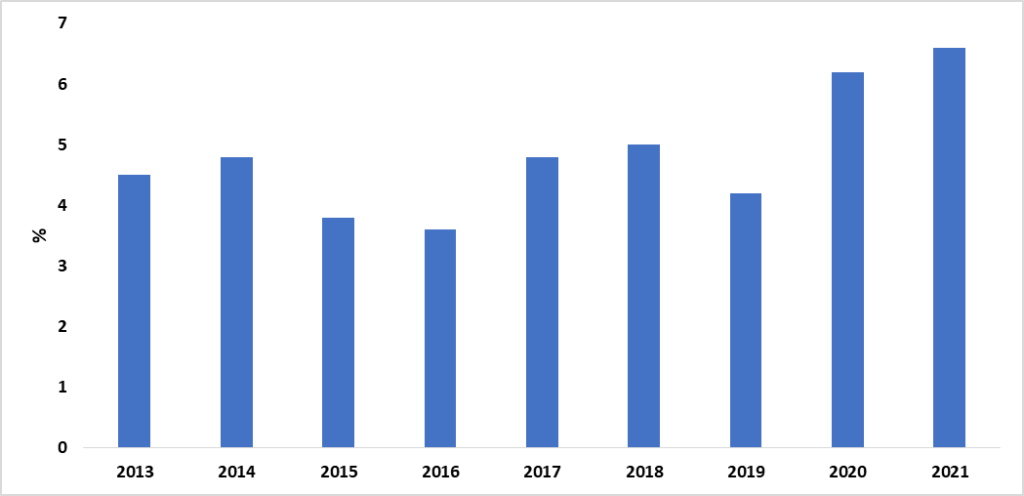Agriculture is one of the country’s most significant productive sectors, however, the sector faces greater risks compared to other productive sectors of the economy. The risks include lack of access to finance and low-rainfall seasons that often leads to droughts. The risks have made both crop and livestock farming challenging, leading to high instability in agricultural production. During times of drought, communal farmers are the most affected when it comes to any shocks in the production or value chain systems. The agricultural sector percentage share to Gross Domestic Product (GDP) for the years 2015, 2016, and 2019 recorded declines of 3.8%, 3.6%, and 4.2% respectively (See figure 1). The below-normal rainfall since 2013 is consistent with a declining trend in agricultural productivity and the debt level which has heightened fears of food insecurity. The funding of agriculture is a major bottleneck in expanding agricultural production. Although Agribank’s loan disbursements over the years have increased, additional investment in agriculture is needed to fully unlock private sector investment and domestic productive capacity (See figures 2 & 3).
Domestic agricultural debt has significantly increased over the years. During the period under review, the accumulative figure extended to agriculture in credit by the Agribank and commercial banks stood at about N$ 22 billion and was recorded in 2019 owing to a decline in primary agricultural production as a result of droughts that led to the massive loss of livestock (See figure 4). The productivity and revenue of farmers that use agricultural loans increase depending on their timely and sufficient use of inputs. Namibian farmers’ ability to repay loans is negatively affected by fewer herd sizes to market coupled with recurring drought and long-term debt as they rebuild their herds.
According to Agribank of Namibia (2022), the agriculture sector is expected to remain resilient in 2023, owing to better rainfall for crops and improved rangeland conditions for livestock farmers. Farmers are encouraged to continue diversifying their farming operations to minimize the risk of climatic, sectoral, or economic shocks on production output and sales. Investments in the agriculture sector are essential to boost productivity, precisely focusing on technological change and climate-resilient production techniques.
Figure 1: Agriculture sector % share to GDP, (2013-2021)

Figure 2: Commercial vs Agribank loans, N$ billion (2010-2021)

Figure 3: Agribank’s Historical Advances vs Non-performing loans, N$ billion (2010-2021)

Figure 4: Cumulative domestic agriculture debt and %YOY Growth, N$ billion (2011-2021)
